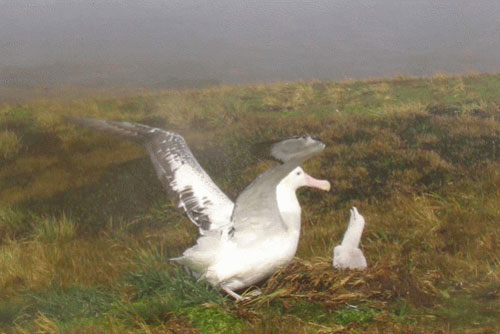Wandering Albatross Diomedea exulans censuses have been undertaken again this year on Albatross and Prion Islands in the Bay of Isles, and on Bird Island, South Georgia (Islas Georgias del Sur)*.
The Wandering Albatross populations in the Bay of Isles have dropped notably since 1984, with that of Prion Island nearly halving over this 25-year period from 60 to 33 breeding pairs, and the Albatross Island breeding population dropping by a quarter, from 171 to 129 pairs. The combined figures are the lowest recorded to date.
Last year (2009) the 31 eggs counted on Prion Island in January produced 27 chicks which survived until at least October, when the last chick count was undertaken.

The Wandering Albatross census of Bird Island was undertaken in February, with only 697 active nests counted, the lowest number on record. Very strong winds during January caused large numbers of nests to fail early in the breeding season, which appeared to be one of the main causes of the low count.
John Cooper, ACAP Information Officer, Sally Poncet, South Georgia Surveys & Stacey Adlard, British Antarctic Survey. 20 April 2010
*A dispute exists between the Governments of Argentina and the United Kingdom of Great Britain and Northern Ireland concerning sovereignty over the Falkland Islands (Islas Malvinas), South Georgia and the South Sandwich Islands (Islas Georgias del Sur y Islas Sandwich del Sur) and the surrounding maritime areas.

 English
English  Français
Français  Español
Español